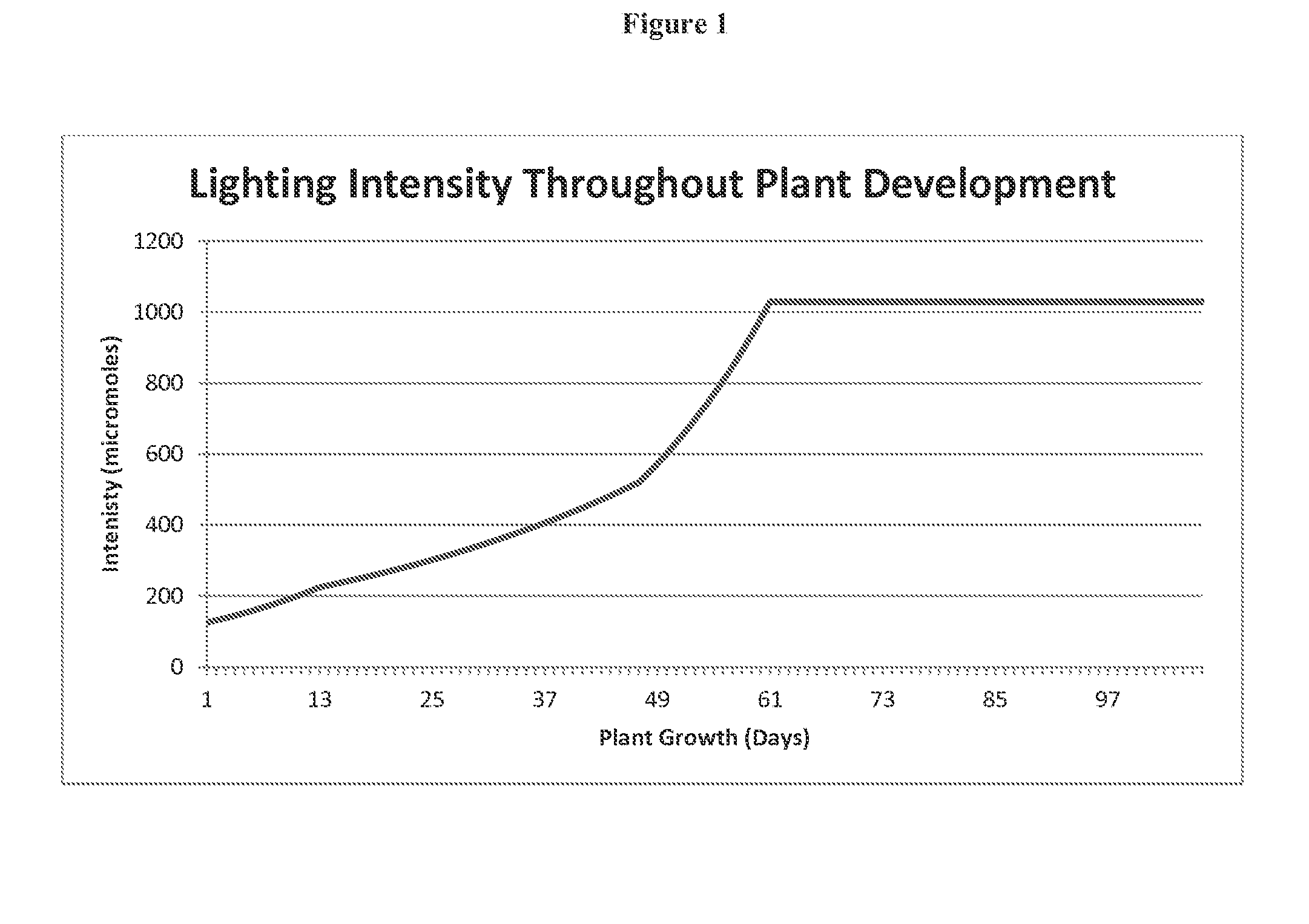Methods of growing cannabaceae plants using artificial lighting
a technology of artificial lighting and cannabaceae, which is applied in the directions of plant/algae/fungi/lichens, biocide, plant/algae/fungi/lichens ingredients, etc., can solve the problems of inability to provide the maximum benefit to the patient, inability to achieve reproducibility, and low thc, so as to achieve the lowest amount of thc, the effect of increasing the yield potential and increasing the availability of cultivars
- Summary
- Abstract
- Description
- Claims
- Application Information
AI Technical Summary
Benefits of technology
Problems solved by technology
Method used
Image
Examples
example 1
Cannabis Composition of Cultivar A
[0148]The cannabis cultivar A was grown according to the methods described herein, harvested and dried, and an inflorescence was taken as a sample for analysis.
[0149]The sample was tested for cannabinoid content. The values are shown in Table 1. Total assayable cannabinoid concentration was determined to be approximately 22.79%. Moisture content was approximately 9.23%.
TABLE 1Assayable CannabinoidsActive Cannabinoids(% by weight)(estimated; % by weight)CBD-A21.77Max CBD20.03CBD0.94THC-A0.08Max THC0.07THCCBN
[0150]The sample contained less than 0.001% each of CBD-V, CBG, THC-V, and CBC.
PUM
| Property | Measurement | Unit |
|---|---|---|
| Fraction | aaaaa | aaaaa |
| Fraction | aaaaa | aaaaa |
| Time | aaaaa | aaaaa |
Abstract
Description
Claims
Application Information
 Login to View More
Login to View More - R&D
- Intellectual Property
- Life Sciences
- Materials
- Tech Scout
- Unparalleled Data Quality
- Higher Quality Content
- 60% Fewer Hallucinations
Browse by: Latest US Patents, China's latest patents, Technical Efficacy Thesaurus, Application Domain, Technology Topic, Popular Technical Reports.
© 2025 PatSnap. All rights reserved.Legal|Privacy policy|Modern Slavery Act Transparency Statement|Sitemap|About US| Contact US: help@patsnap.com

